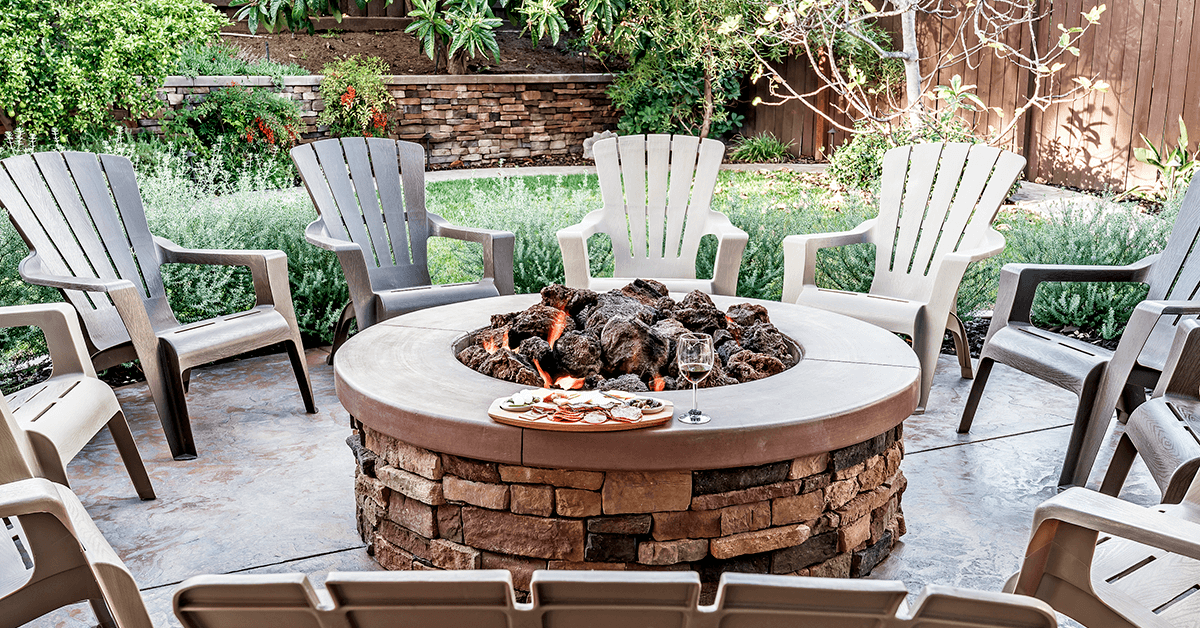
How to Pick the Perfect Outdoor Heating Unit for Your Space
After nearly a year of social distancing and on-again-off-again stay at home orders, homeowners are looking to make the most of every square inch of their property. A realtor.com study showed that sheltering in place changed the way homeowners prioritized their living space. The study revealed outdoor space is the second most important feature to homeowners (a quiet neighborhood ranked first). As winter kicks into full swing, homeowners across the country are looking for ways to extend their time in their highly valued outside space.
Outdoor heating is an essential add-on if you’re looking to enjoy your yard, balcony, or patio year-round. After an initial shortage early in the pandemic, outdoor heaters and fire pits are finally back in stock. With so many options available, it can be hard to know which type of heating unit is the best and safest choice for your outdoor space.
The three most popular types of outdoor heating units are propane, electric, and wood-burning. Each option has its own benefits and challenges.
- Propane Heaters: Propane heaters are a popular choice. They come in a variety of shapes and sizes so you’re likely to be able to find one to suit your space and your style.
- Electric Heaters: Electric heaters appeal to many homeowners because of their efficiency and cost. Floor-based, tabletop, and wall-mounted options mean there’s an electric heater for every space.
- Wood-Burning: Fire pits and outdoor fireplaces are easy to use and create a gentle ambiance for a backyard hangout.
Factors to Consider Before Purchasing Your Outdoor Heating Unit
Your unique outdoor space and circumstances will ultimately guide your outdoor heating decision.
1. How big is your space?
A heater’s specifications should include how many British thermal units (BTUs) it produces. BTUsare a measurement of energy. To determine how many BTUs you will need to heat your space you first need to find the area of your space. To do so, you’ll multiply the length of your patio or deck by the width of your patio or deck. Then, multiply the square footage by 20 BTUs per square foot. So a 500 square foot patio would need a heating source that provides 10,000 BTUs.
If you live in a colder climate or a wind-prone area you will need a stronger heating unit or multiple heating units to achieve the same results. You can use this simple BTUs calculation as a rough guide for understanding how powerful your outdoor heating source will need to be.
- Propane: Large spaces are typically best heated by propane heaters. The New York Times notes, “Propane patio heaters tend to put out more heat than electric heaters – about eight times as many British thermal units on average.”
- Electric: Electric heaters typically produce fewer BTUs than propane heaters. However, for spaces with inadequate ventilation, like a garage, an electric heater is the safe choice.
- Wood-Burning: Wood-burning features like fire pits and fireplaces produce the fewest BTUs. These options are great for small spaces and moderate climates.
2. How much do you want to spend?
Whether you’re purchasing a propane, electric, or wood-burning heating option, the price will be affected by the unit’s size and features.
- Propane: Propane heaters tend to be the most expensive option. They range in price from $150-$500. You’ll also need to replace the propane tank over time. A standard 20-pound propane tank can cost between $40 and will last 18-20 hours.
- Electric: Electric outdoor heaters are more moderately priced. A small floor or tabletop model may cost around $100, while slightly more powerful units will cost around $300. Since these heaters run with electricity, the cost of use is absorbed into your monthly electric bill.
- Wood-Burning: A wood-burning fire pit can cost as little as $50 at a big box store. However, upgraded wood-burning fire pits that reduce smoke, like the Solo Stove, can cost upwards of $300.
If you’re considering installing a permanent outdoor fireplace your overall cost will vary greatly depending on the size and materials you use. Home Advisor notes the average cost of an outdoor fireplace is $3,000 but customization and add-ons can raise that price considerably.
3. Which safety features are included?
It goes without saying that using an outdoor heater or a fire pit comes with an increased risk for home fires and burns. While many units come with built-in safety features, it is still important to operate all heaters and fire pits in accordance with the manufacturer’s guidelines and your own common sense.
- Propane: Many outdoor propane heaters come with an emergency shut off button as well as an automatic shut off feature to prevent fires should the unit tip over. When you’re setting a propane heater up in your space, be mindful of the recommended clearance both vertically and horizontally.
- Electric: While less powerful than their propane counterparts, electric heaters still get very hot. Many outdoor electric heaters come with tip protection and auto-shutoff features. Again, it is important to be mindful of the recommended clearance guidelines for the entire unit.
- Wood-burning: Aside from a metal cover to keep embers enclosed, fire pits and fireplaces have very few safety features. The safety of these units lies primarily in the hands of the user. If you intend to use a wood-burning fire pit you should familiarize yourself with basic fire safety measures and the local laws and regulations surrounding fire pits in your area.
The pandemic continues to affect the way we live in our homes. Adding the right outdoor warming feature to your yard is the perfect way to enjoy your outdoor space all winter long.
Time to Focus on Affordable Housing
Taxes on real estate are not the answer. Sign the petition calling on Congress to address our country’s housing shortage.





